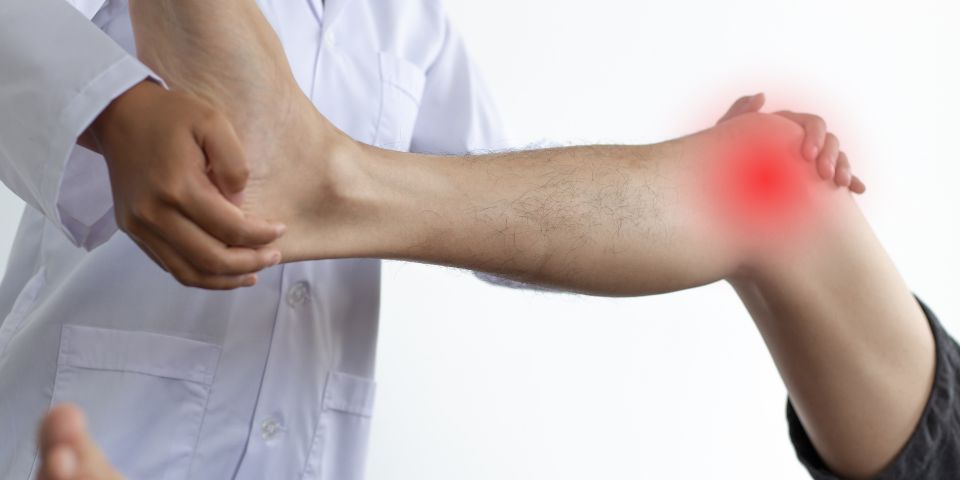Arthritis and other Musculo-skeletal issues
Do you suffer with any of the following?
-Rheumatoid arthritis
– Osteoarthritis
– Repetitive Strain Injury
– Frozen shoulder
– Bursitis
– Golfers Elbow
– Tennis Elbow
– Carpel Tunnel Syndrome
– Sciatica
– Lower back pain
More than 10 million people in the UK have arthritis or a similar joint condition. These affect children and adults.
Osteoarthritis is the most common type of arthritis in the UK. It most often develops in people in their mid-40s or older. It’s also more common in women and people with a family history of the condition. But it can occur at any age as a result of an injury or be associated with other joint-related conditions, such as gout or rheumatoid arthritis. Osteoarthritis initially affects the smooth cartilage lining of the joint. This makes movement more difficult than usual, leading to pain and stiffness. Once the cartilage lining starts to roughen and thin out, the tendons and ligaments have to work harder. This can cause swelling and the formation of bony spurs called osteophytes. Severe loss of cartilage can lead to bone rubbing on bone, altering the shape of the joint and forcing the bones out of their normal position.
The most commonly affected joints are those in the:
- hands
- spine
- knees
- hips
Common symptoms include: pain, swelling of joints, redness and heat on joint areas, stiffness and limited range of movement. Long term pain can really affect quality of life and mental health of those afflicted.
Conventional medicine normally offers anti-inflammatories such as NSAID drugs (e.g. ibuprofen, diclofenac, naproxen). Often arthritis is seen as an accepted side-effect of growing older.
Rheumatoid arthritis is less common than osteoarthritis. It often starts when a person is between 30 and 50 years old. Women are more likely to be affected than men. In rheumatoid arthritis, the body’s immune system targets affected joints, which leads to pain and swelling. The outer covering (synovium) of the joint is the first place affected. This can then spread across the joint, leading to further swelling and a change in the joint’s shape. This may cause the bone and cartilage to break down. People with rheumatoid arthritis can also develop problems with other tissues and organs in their body.
Bursitis is when the fluid-filled sacs (bursa) that cushion the joints have become painful and swollen (inflamed). It can usually be treated at home and should go away in a few weeks.
Symptoms include: painful joints– usually a dull, achy pain/ tender or warmer joints than surrounding skin/ swollen joints/ more painful joint when you move it or press on it/ The area may also be red
Bursitis can affect any joint, but it’s most common in the shoulders, hips, elbows or knees.
Tennis elbow is a condition that causes pain around the outside of the elbow. It usually goes away with rest but can sometimes last over a year. There are treatments that can help if needed.
Symptom include: pain on the outside of your elbow, which may may range from mild discomfort when you move your arm to constant pain that can affect your sleep.
It may be worse when:
lifting or bending your arm
gripping objects
moving your wrist
Other symptoms of tennis elbow include: tenderness or swelling in your elbow, pain in your forearm, difficulty fully straightening your arm
Carpel tunnel syndrome (CTS) is pressure on a nerve in your wrist. It causes tingling, numbness and pain in your hand and fingers. You can often treat it yourself, but it can take months to get better.
Symptoms include:
an ache or pain in your fingers, hand or arm
numb hands
tingling or pins and needles
a weak thumb or difficulty gripping
These symptoms often start slowly and come and go. They’re usually worse at night.
Frozen shoulder means your shoulder is painful and stiff for months, sometimes years. It can be treated with shoulder exercises and painkillers.
Symptoms include:
pain in your shoulder which can be worse at night and disturb sleep
stiffness in your shoulder which makes it difficult to move
Frozen shoulder can take months or years to get better. But the pain and stiffness will usually go away eventually.
Repetitive strain injury (RSI) is a term sometimes used for pain caused by repeated movement of part of the body. It often gets better on its own, but there are things you can do to help speed up your recovery.
You can get repetitive strain injury (RSI) in many parts of the body, but it most often affects the:
shoulders
elbows
forearms and wrists
hands and fingers
Symptoms include:
pain, which may feel like burning, aching or throbbing
stiffness and weakness
tingling, pins-and-needles or numbness
muscle cramps
swelling
Causes of repetitive strain injury (RSI)
Repetitive strain injury (RSI) is caused by repeated use of a body part, such as your shoulder, elbow, forearm, wrist or hand. For example, you can get RSI if:
you do repetitive activities like hairdressing, decorating, typing or working on an assembly line
you play sports like golf or tennis that involve lots of repetitive movements
you have poor posture when sitting or standing at work
you use hand-held power tools regularly
Repetitive or strenuous work does not always cause RSI. Many people do the same job for years without having a problem.
Sciatica is where the sciatic nerve, which runs from your lower back to your feet, is irritated or compressed. It usually gets better in 4 to 6 weeks but can last longer. Areas where you may have symptoms are: bottom, back of your leg, foot and toes.
Symptoms include:
painful – the pain may be stabbing, burning or shooting
tingling – like pins and needles
numb
weak
Your symptoms may be worse when moving, sneezing or coughing. You may also have back pain, but it’s not usually as bad as the pain in your bottom, leg or foot.
Are there any dietary or natural treatments that may help with these debilitating conditions? Here are my 5 top dietary tips for arthritis-type conditions:
- Eat more sulphur-rich foods e.g. eggs, onions, asparagus, garlic
- Eat fresh pineapple. It contains bromelain which is an anti-inflammatory ingredient.
- Increase histadine-rich foods e.g. meat, fish, cheese, nuts, seeds, eggs, beans
- Eat more ‘good’ fats e.g. butter, avocados, coconut oil, essential fatty acids such as omega 3/6/9
- Avoid these foods: processed foods, gluten, alcohol, fried foods, citrus fruits, salt, paprika, ‘Night-shade’ family vegetables like tomatoes, potatoes, aubergine and bell peppers. These can all cause inflammation. Try cutting down on these and see if this decreases your pain levels.
- Caster oil packs can be applied several times a day to ease joint pain. Grated fresh ginger poultices can also be used in the same way to stimulate blood flow and ease pain.
Homeopathy offers us many wonderful remedies which can ease pain, increase mobility and soothe inflammatory conditions.







